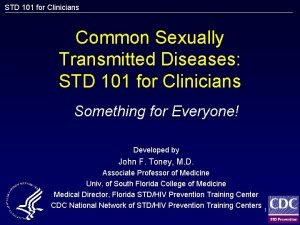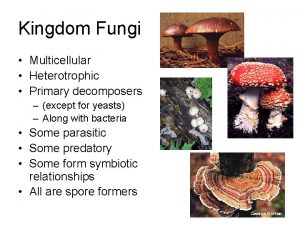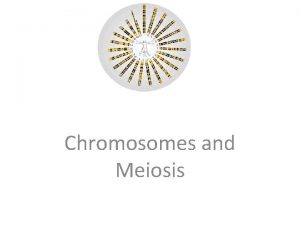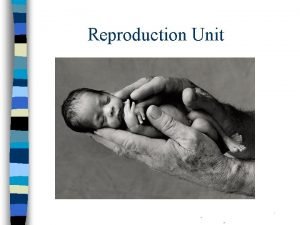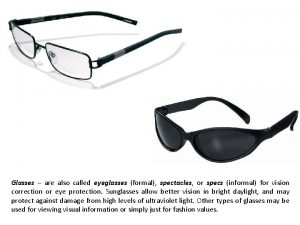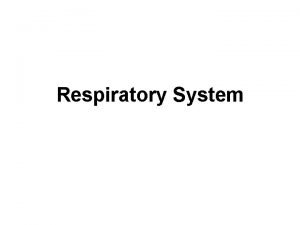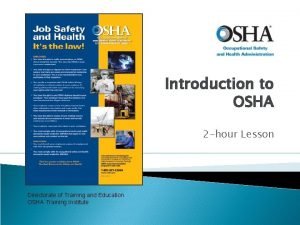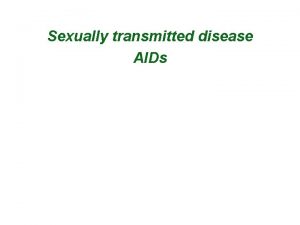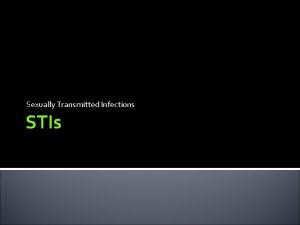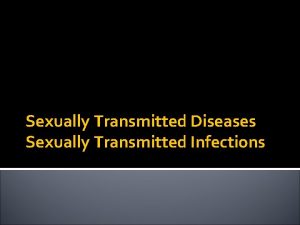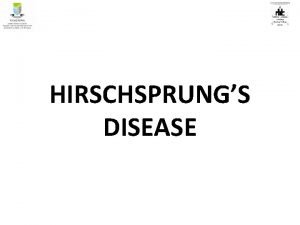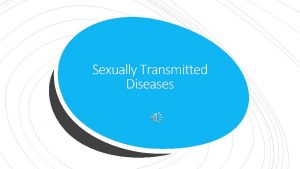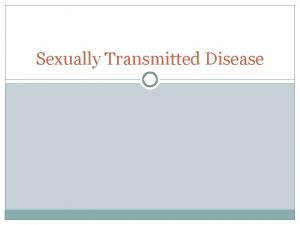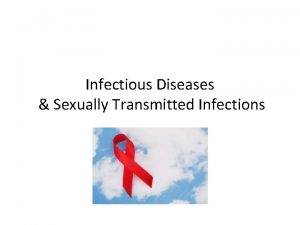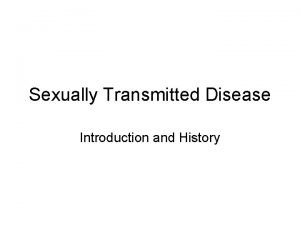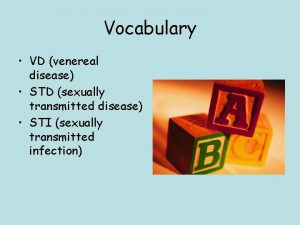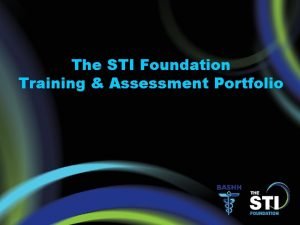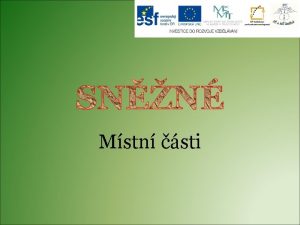STDsSTIS STDsexually transmitted disease Also called an STI





















































- Slides: 53

STD’s/STI’S

• STD=sexually transmitted disease • Also called an STI • Infection transmitted by sexual contact What is an STD?

• Go undiagnosed • Having an STD increases your risk of other STD’s and HIV infection • Have periods of time where the person is symptomless and therefore you can unknowingly transmit them • Half of all STD’s occur in people under the age of 25 • One in four cases happen in teenagers • The age group 15 -24 has 5 times the normal rate of Chlamydia, 4 times the normal rate of gonorrhea, and 3 times the normal rate of syphilis • Being infected with one STD increases your risk of getting others Worried about STD’S? You shoud be……

1 in 2 SEXUALLY ACTIVE Young people Will get An STD By the age of 25 MOST Will not know it!!!!

STD Data in Milwaukee

• More likely to have multiple, sequential, or concurrent sex partners, rather than single long term relationships • More likely to engage in unprotected sexual intercourse • They select partners that are at higher risk “IF YOU DON’T TAKE RESPONSIBILITY FOR YOUR SEXUAL HEALTH, WHO WILL? ? What puts Teens at a higher risk? ?

• Shaking hands • Sitting on a toilet • Getting coughed or sneezed on • Sharing utensils • Being bitten by an insect • • • False False True or False? You can get an STD from…

• Sexual contact means any intimate contact (not just intercourse) with another persons: • • • Lips Mouth Penis Vagina Anus You get an STD via Sexual Contact

• Being a sexually active teen • Multiple partners • Not using latex condoms • Using drugs or alcohol Risk Factors

• Abdominal pain • Painful urination • Painful sex • Unusual discharge from the penis or vagina • Genital soreness, burning, itching • Unusual sores or rashes How will I know

• Seek medical attention from a Doctor They will: Take a sexual and health history Do a physical exam Take samples of urine, blood and or fluid from the sores Interpret test results Make a diagnosis What should you do?

• Virus: No known cure, can only treat the symptoms. Examples: Genital warts, genital herpes, hepatitis, HPV and HIV • Bacteria: Single celled microorganism. Cured by antibiotics. Examples: Chlamydia, syphilis, gonorrhea, vaginitis. • Other Protozoan/parasites: Single celled organism. Cured by special medicated shampoos, and some oral medications. Examples: Trichomoniasis, pubic lice, scabies. Categories of STD’s

• Can be cured with antibiotics • Can be acquired over and over again • Both partners must be treated at the same time to be effective Bacterial STDS

• Chlamydia • Gonorrhea • Syphilis Bacterial STDS

• Over 1, 000 new cases a year-1/2 of these are in 15 -17 yr olds • If left untreated can lead to PID (Leading cause of PID) • Symptoms include: yellow discharge from penis/vagina, painful urination, lower abdominal pain, swollen testicles, painful sex for women • 75% of women have no symptoms CHLAMYDIA

• 300, 000 new cases a year, highest rate in 15 -19 year old females • If left untreated is a leading cause of PID • Symptoms include: Discharge, rectal bleeding and constipation, painful and frequent urination for males, spotting for females • Women often have no symptoms Gonorrhea

• Chronic painful infection of the female reproductive tract • Results from untreated chlamydia or gonorrhea • Treated with antibiotics • Affects over 1 million women each year PID-Pelvic Inflamatory Disease

• 10, 000 new cases a year • If left untreated can lead to paralysis, blindness, insanity or death • Causes a painless sore (chancre) to appear in 10 -90 days • If left untreated causes flue like symptoms, rash on the palms of hands or soles of the feet • Very contagious • Lies dormant in the body causing organ damage, blindness, paralysis and death Syphilis

• Cannot be cured; you’re infected for life • Common viral STDs: HIV Genital Herpes Genital Warts (HPV) Hepatitis B • May be controlled with anti-viral meds Viral STDS

• 1 in 5 sexually active people will get Herpes Simplex 2 • 1 in 4 women • 1 in 8 men • It is painful and embarrassing but there are no long term heath risks Genital Herpes

• • Itchy blisters on the genitals and surrounding area Outbreaks usually become less frequent over time Transmission can occur even between outbreaks Many infected people never have an outbreak Symptoms

• Meds can reduce symptoms during outbreaks • Anti-viral meds help reduce transmission • DO NOT HAVE SEX DURING OUTBREAKS! Treatment

• More than 100 viruses in the HPV family • 40 of these are sexually transmitted • An estimated ½ of all sexually active people will be infected. HPV = Human Papillomavirus

• Warts on the penis, anus or groin, or in the throat • Warts may be flat, raised or cauliflower shaped • Warts may grow, remain the same or disappear • Most infected people have no symptoms Symptoms

• • Cancer of the Cervix Cancer of the Penis Cancer of the Vagina Cancer of the Anus Risks

• Protects against 70% of the strains responsible for cervical cancer and some genital warts • Must be given before the infection occurs • Vaccine is approved for men and women HPV Vaccine

• Warts can be removed • Pre-cancerous tissue detected in Pap Smears can be removed • No medication exists for treatment Treatment

• • About 5, 000 new cases a year Virus infects the liver Can cause liver cancer, failure and death 44 states require vaccine for public school attendance Hepatitis B

• Protozoa • Parasitic Other types of STD

• Caused by a protozoa • 7. 4 million cases a year (#1 STD) • The most common, curable STD among young women • Condoms prevent transmission Trichomoniasis

• • Appear in 1 -4 weeks Frothy, smelly vaginal discharge Discharge from the penis Genital itching Painful intercourse Painful urination Men usually have no symptoms Symptoms

• Anti-microbials • Repeat infections possible • Both partners must be treated at the same time Treatment

• Tiny wingless parasitic insects, also called “Crabs” • Feed or burrow on blood • Lay their eggs on skin • New lice mature 2 weeks after hatching • Transmitted by close physical contact, sharing towels or clothing Pubic Lice

• • Redness Swelling Itching Can quickly spread to anus, eyelashes and other areas of the body • Treated with specially medicated shampoos Symptoms/Treatment

HIV/AIDS Pre Test 1. Which statement best describes the relationship between HIV and AIDS? a. HIV and AIDS are the same thing. b. HIV can be cured but AIDS cannot be. c. HIV is the virus that causes AIDS. d. HIV has no relationship to AIDS. 2. Which of these statements about HIV infection is true? a. HIV attacks cells of the immune system. b. HIV can be detected with a blood test. c. HIV can lead to AIDS if untreated. d. All of the above

j 3. Who is most likely to get infected with HIV? a. People who have unprotected sex. b. Gay men. c. People who donate blood. d. People who get blood transfusions from donors. 4. What do people with HIV look like? a. They are usually sick and frail. b. They are usually well-groomed and strong. c. They are usually like everyone else. d. They are usually poor and shabby. 5. What is the relationship between sex and alcohol use? a. Alcohol makes sex better. b. Alcohol reduces a person’s interest in sex. c. Alcohol kills germs so condoms aren’t necessary. d. Alcohol reduces a person’s ability to make good decisions about sex.

6. How can the risk of an HIV infection be reduced? a. Use a condom for sex every time. b. Avoid injection drugs. c. Abstain from sex and drugs. d. All of the above. 7. Which of the following activities cannot transmit HIV? a. everyday activities like talking, hugging, going to a movie b. having unprotected sex with a regular partner c. sharing needles to shoot drugs d. All these activities are risky. 8. Which of these statements about HIV infection is true? a. With medication, a person can live a fairly normal life. b. Death occurs within months of HIV infection. c. Medications can eliminate HIV from the body. d. The HIV infection quickly spreads to the brain.

9. Which of these statements about women with HIV is true? a. They become sterile and cannot have children. b. They have difficulty becoming pregnant. c. They always pass HIV to their babies. d. They can have a baby that does not have an HIV infection. 10. What does the HIV test look for? a. the virus itself b. antibodies to the virus c. cells in the immune system d. signs that the immune system is very weak

HIV Statistics

HIV/AIDS STATS • In 2009 alone, there were an estimated 2, 078 new cases of HIV infection in 13 - to 19 -year-olds and 6, 314 new cases in 20 - to 24 -year-olds. • In 2007, HIV was the ninth leading cause of death for African-Americans of all ages and the third leading cause for African-American men and women between the ages of 35 and 44. • The Centers for Disease Control (CDC) report that 20 percent of reported new HIV infections in 2009 are in people under 25. • In 2009 in the US, 90 percent of the HIV infections in 13 - to 19 -year-olds were the result of sexual intercourse. • In the US in 2009 almost one-quarter of new HIV cases in 13 - to 19 -yearolds were female. In young people between the ages of 20 and 24, females made up 19 percent of all HIV cases. —Sources: Centers for Disease Control and UNAIDS

• In 2009 approximately 35 million people worldwide were living with HIV/AIDS. This is a decrease from 2002, when an estimated 42 million people worldwide were living with HIV/AIDS. More than 70 percent of these people live in Sub-Saharan Africa. • Worldwide, more than 80 percent of all adult HIV infections have resulted from heterosexual intercourse. • Approximately 50, 000 new HIV infections occur in the United States each year; about 70 percent among men and 30 percent among women. • Through the end of 2008, approximately 617, 000 people have died from AIDS in the US. • Approximately 1, 000 people were living with HIV infection or AIDS in the US at the end of 2008. Of these an estimated 21 percent did not know they have it.

Human Immunodeficiency Virus • Virus that causes AIDS • HIV damages the bodies immune system, thus causing AIDS • People typically die from complications of a secondary infection or disease How does HIV become AIDS HIV destroys a certain type of blood cell called the CD 4+T cell What is HIV?

HIV/AIDS Facts • HIV can be transmitted through: Blood Semen or Pre-seminal fluid Vaginal fluid Breast Milk HIV can enter through a vein, the lining of the anus or rectum, the lining of the vagina or cervix, the opening of the penis, the mouth or other mucus membrane. It cannot enter through intact, healthy skin. It is not found in saliva, tears, sweat, urine , feces, vomit or nasal secretions unless blood is present. • Most common ways it is obtained Unprotected Sex (anal, oral or vaginal) Sharing needles Mother to baby at birth or breast milk

• Flu like symptoms appear after a few weeks of infection • HIV and the immune system remain in a standoff battle for years • When immune system starts to lose after 5 -8 years weight loss, swollen glands, extreme fatigue and oral thrush happen • Death is possible if untreated Symptoms

HIV TO AIDS Scientists have estimated that about half the people infected with HIV develop AIDS within 10 years after becoming infected. This time varies greatly from person to person and can depend on many factors, including a person’s health care and lifestyle.

Special Cases • KISSING— Only one case of AIDS has ever been attributed to open-mouth kissing. However, because of the potential for contact with blood during open-mouth kissing, never practice this activity with someone who is infected. • SPITTING or BITING— Although saliva contains a very minor amount of HIV, it also contains a protein that works to destroy the virus. The amount of HIV in saliva is not high enough to make spitting or biting a common risk. • HEALTHCARE WORKERS— Investigations into more than 22, 000 patients of 63 HIV-infected doctors and dentists have resulted in only one demonstrated case of HIV transmission. • SHARED UTENSILS— There is an extremely remote chance for HIV transmission, and only if blood is involved, such as from a cut in the mouth. • TEARS and SWEAT— These fluids do not contain enough HIV to cause infection.

• Casual contact (social kissing, shaking hands, coughing, sneezing, swimming pools, bathrooms, eating utensils, drinking fountains) HIV Cannot Be Transmitted Through

• Blood test • It takes 3 to 6 months after you are exposed to develop the detectable antibodies that tell if you have HIV • Dr. Office, STD clinics, Family planning services, HIV testing sites WHO SHOULD BE TESTED • Men who have unprotected sex with other men • People who share needles • People with several sexual partners • People who already have another STI • Infants born to HIV positive mothers • People who are significantly exposed to another person’s blood and they have open wounds, or exposure to open areas How can I tell if I have HIV

• • • Wisconsin AIDS line: 1 -800 -334 -AIDS Spanish speaking AIDS line: 1 -800 -344 -7432 Red Cross AIDS service organizations in Milwaukee On the Web Wisconsin AIDS/HIV Program Centers for Disease Control National Prevention Information Network WHERE CAN I GET MORE INFO?

BLOOD LINES DVD

• RED LIGHT = HIGH RISK ACTIVITY • YELLOW LIGHT = MODERATE RISK ACTIVITY • GREEN LIGHT = LOW RISK ACTIVITY RED LIGHT – GREEN LIGHT ACTIVITY

• • • Anal Intercourse without a condom Sharing needles for injecting drugs, etc. . Vaginal intercourse without a condom Anal intercourse with internal ejaculation with a condom Vaginal intercourse with a condom and internal ejaculation Sharing needles for tattooing, or piercing Breast feeding by an infected mother Unprotected oral sex Cleaning blood spills with no barrier High Risk Behaviors for getting HIV

• • Blood spills with barriers Mutual masturbation Deep wet kissing Dry kissing Hugging and massage Self-masturbation Donating blood Mutually monogamous relationships with an uninfected partner • ABSTINENCE Low Risk Behaviors
 Std
Std A song transmitted orally which tells a story:
A song transmitted orally which tells a story: Communicable disease and non communicable disease
Communicable disease and non communicable disease Adjective are also called
Adjective are also called Joints are also called
Joints are also called Short workings can be recouped out of
Short workings can be recouped out of What is character stuffing in computer network
What is character stuffing in computer network Primary decomposers
Primary decomposers Brief work of fiction
Brief work of fiction Circle graph is also called
Circle graph is also called Binding mortar
Binding mortar Somatic cells are also called
Somatic cells are also called Parallel structures are also called
Parallel structures are also called Situation complication question answer
Situation complication question answer Citric acid cycle also called
Citric acid cycle also called Arithmetic density
Arithmetic density Specifcation based techniques are also called as
Specifcation based techniques are also called as Womb is also called
Womb is also called Whats technical school
Whats technical school Womb is also called
Womb is also called A tree is a connected graph without any
A tree is a connected graph without any Why are they called modal verbs
Why are they called modal verbs Ac voltage controller output voltage formula
Ac voltage controller output voltage formula Formal spectacles
Formal spectacles Types of dominance in art
Types of dominance in art Multimedia software uses
Multimedia software uses Womb is also called
Womb is also called Exposure incident cosmetology
Exposure incident cosmetology Complex carbohydrates are also called
Complex carbohydrates are also called Koreans celebrate thanksgiving
Koreans celebrate thanksgiving A network adapter also called a ____
A network adapter also called a ____ Locomotor examples
Locomotor examples Antihemorrhagic vitamin is also called
Antihemorrhagic vitamin is also called What is the voice box called
What is the voice box called A pixel p at coordinates
A pixel p at coordinates A dependent clause is also called a
A dependent clause is also called a Raster scan system
Raster scan system Decimal system is also called as
Decimal system is also called as What are the osha construction standards also called
What are the osha construction standards also called Sharks phylum
Sharks phylum It is also called figurative language
It is also called figurative language What are capital resources examples
What are capital resources examples Formal equivalence vs dynamic equivalence
Formal equivalence vs dynamic equivalence Uninformed search is also called as
Uninformed search is also called as Status register
Status register Mc clellands theory of motivation is also called as
Mc clellands theory of motivation is also called as 15 helping verbs
15 helping verbs Polka dot beam splitter
Polka dot beam splitter Alkanes list
Alkanes list Permanent hardness is also called as
Permanent hardness is also called as Womb is also called
Womb is also called A workbook is also called a
A workbook is also called a Is also called as data selector.
Is also called as data selector. Operational amplifier is also called as
Operational amplifier is also called as
